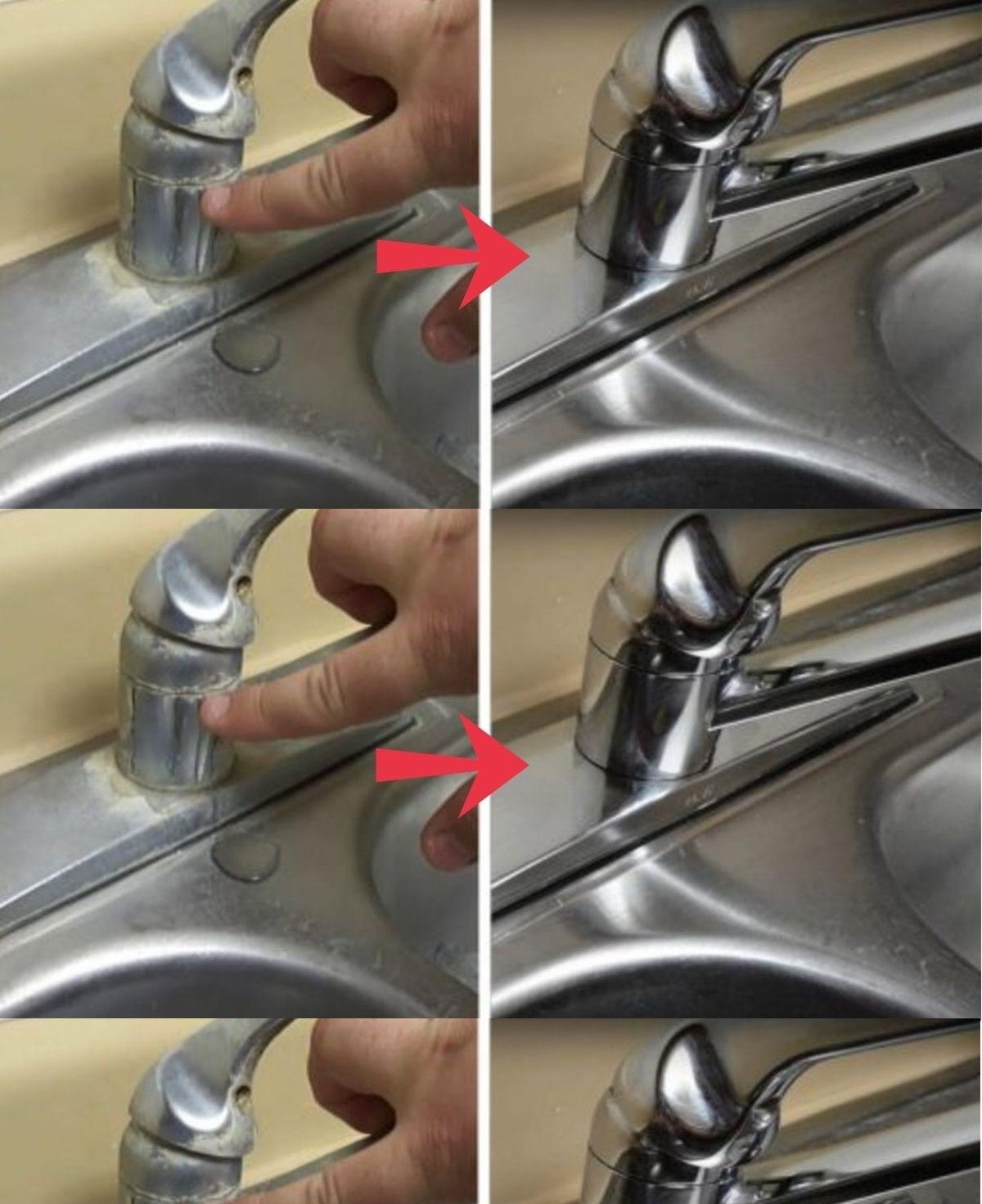ADVERTISEMENT
Step-by-Step Guide to Revive Your Dull Faucets
1. Gather Your Cleaning Supplies
Before you begin, gather the necessary tools and supplies to clean and restore your faucets:
- White vinegar or lemon juice (both are natural acids that help dissolve mineral deposits)
- Baking soda (for gentle scrubbing)
- Microfiber cloths (for polishing and drying)
- Old toothbrush (for scrubbing hard-to-reach spots)
- Rubber gloves (optional, but recommended if you have sensitive skin)
- Plastic bag (optional, for soaking faucet heads)
- Dish soap (for general cleaning)
2. Clean the Faucet with Dish Soap
Start by washing the faucet to remove any dirt, dust, and soap scum. Fill a bowl with warm water and a small amount of dish soap, then dip a microfiber cloth into the soapy water and wipe down the faucet. Be sure to clean both the spout and handle thoroughly. Rinse with clean water and dry with a fresh cloth. This will remove any surface dirt and prepare the faucet for deeper cleaning.
3. Tackle Mineral Deposits and Hard Water Stains
Mineral deposits and hard water stains are common causes of dullness on faucets. White vinegar is a natural solution for this issue. Here’s how to use it:
- Soak a Cloth with Vinegar: Soak a microfiber cloth in white vinegar and wrap it around the affected areas of the faucet (the faucet spout, handle, or any areas with visible mineral buildup).
- Let it Sit: Leave the vinegar-soaked cloth on the faucet for 10 to 15 minutes to loosen up the mineral deposits.
- Scrub the Faucet: After the cloth has soaked in the vinegar, use an old toothbrush to scrub away any remaining mineral buildup. Focus on areas with heavy staining or buildup.
- Rinse and Dry: Once you’ve scrubbed away the deposits, rinse the faucet with clean water and dry it with a microfiber cloth.
If you don’t have time to soak a cloth, you can soak the faucet aerator in vinegar for an hour or two, as mineral buildup often collects in this small part of the faucet.
4. For Extra Tough Stains: Use Baking Soda
Baking soda is an excellent abrasive cleaner that can help tackle stubborn stains without scratching the faucet’s surface. To use baking soda:
- Make a Paste: Mix baking soda with a small amount of water to create a paste. Apply the paste to any areas that still have stubborn stains or water spots.
- Scrub Gently: Using your old toothbrush, gently scrub the affected areas in small, circular motions.
- Rinse and Dry: Once the stains are gone, rinse with warm water and dry with a clean cloth.
5. Polish the Faucet for Extra Shine
To give your faucet that final shiny touch, you can polish it using a natural ingredient like baby oil, olive oil, or mineral oil. Here’s how to polish your faucet:
- Apply a Small Amount: Pour a small amount of oil onto a microfiber cloth (a few drops should suffice).
- Buff the Faucet: Gently buff the faucet with the cloth, focusing on one area at a time. This will bring out a shine and help create a protective barrier to prevent future water spots.
- Buff Off Excess: Make sure to buff off any excess oil to avoid leaving the faucet greasy.
If you prefer a store-bought product, there are also faucet polishing sprays available. Simply follow the manufacturer’s instructions.
6. Prevent Future Buildup
Now that your faucet is clean and shiny, it’s important to maintain its appearance by preventing future buildup:
- Wipe After Use: After each use, wipe down your faucets with a microfiber cloth to prevent water spots from forming.
- Install a Water Softener: If you live in an area with hard water, consider installing a water softener to reduce mineral buildup on your faucets and other appliances.
- Clean Regularly: Clean your faucets at least once a week to keep them looking fresh. A quick wipe-down with a damp cloth can prevent the accumulation of soap scum and hard water stains.
Additional Tips for Specific Types of Faucets
- Stainless Steel Faucets: Stainless steel can tarnish over time. Use a mixture of vinegar and water to clean it, and follow up with a bit of baby oil or olive oil to restore its shine. Avoid using abrasive scrubbing pads that can scratch the surface.
- Chrome Faucets: Chrome faucets are highly reflective and can become dull or scratched easily. Use a mixture of vinegar and water to clean, but avoid abrasive cleaners or harsh scrubbing pads. For added shine, buff with a soft cloth and a few drops of mineral oil.
- Brass Faucets: Brass faucets require a little extra care to avoid tarnishing. Use a gentle cleanser and avoid harsh chemicals. A mix of vinegar, salt, and flour can be used as a brass cleaner to polish the surface and restore its natural shine.
Conclusion: Restore Your Faucets to Their Former Glory
With just a few simple steps, your dull, lackluster faucets can look brand new again. By using natural ingredients like vinegar, baking soda, and oil, you can clean, polish, and protect your faucets without spending a fortune on expensive products. Regular maintenance and cleaning will ensure that your faucets remain shiny, fresh, and in great condition for years to come.
Give your faucets a makeover today, and enjoy the gleaming results every time you use your sink!
